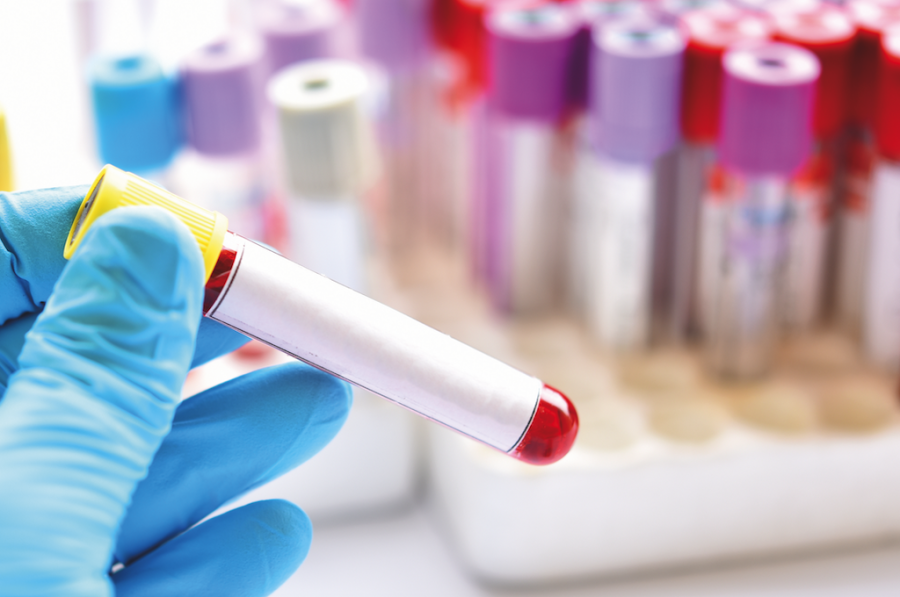If you’re serious about performance, recovery and results, you need to be monitoring your biomarkers, writes nutritionist Renee McGregor.
How you feel, combined with how you perform, are fairly reliable indicators of how effective your training is, but anyone who takes their performance seriously can also benefit from monitoring.
If you really want to get the most out of someone’s performance, you have to understand how their body is responding to their training load – only then you can provide them with appropriate nutritional interventions.
Monitoring biomarkers or, more simply, blood values of key markers such as iron, vitamin D and hormones, can tell us about inflammation, as well as immune, bone and hormonal health, which tells us about an athlete’s readiness to train or compete.
Looking at specific blood biomarkers can help us get a grip on what is really going on within the body.

If your workouts constantly leave you feeling burned out, low iron levels could be to blame | Photo: Shutterstock
Iron
I generally look at haemoglobin, ferritin (iron stores) and transferrin saturation, which helps to identify absorption of iron from the gut. It’s important to identify low levels, because a deficiency will have a negative impact on appetite, energy levels and overall performance.
It’s also important to look at all three values for a full picture: values of haemoglobin should be 14 or above, ferritin 40 or above and transferrin saturation above 20 per cent in anyone who’s very active.
Vitamin D
The UK’s drizzly weather isn’t just detrimental to your tan; studies show the lack of sunlight in winter means vitamin D deficiency is common. The consequences are low immunity, low mood and low energy levels.
For anyone who exercises on a regular basis, that means the very real problem of reduced recovery between sessions and increased muscle soreness. Acceptable levels of vitamin D for the athletic population should ideally be above 90 nanomoles per litre (nmol/L).
Thyroid
The thyroid gland is integral to our health and performance on so many levels. These levels are of particular interest to me when I’m monitoring either endurance athletes, or those doing very heavy lifting.
I will look at the following hormones: thyroid stimulating hormone (TSH), luteinizing hormone (LH), follicle-stimulating hormone (FSH), prolactin, testosterone, and Free T3.
When we over-reach, overtrain and/or under-fuel, we create more stress to the body. This stress has a negative impact on the pituitary gland, which can then dial down our thyroid function.
Monitoring TSH can help identify those at risk, while looking at T3 can indicate low energy availability. In other words, if T3 is low we can conclude there’s not sufficient energy being taken on board to fuel training and maintain basic biological processes. This, in turn, can lead to reduction in production of the sex hormones.
Chronically low testosterone levels, meanwhile, will have implications on bone, cardiovascular and immune health, as well as overall mood. In men, testosterone levels under ten will mean they are less likely to respond to their training stimulus – whether that’s strength or endurance-focused.
Timing and composition of fueling around training is critical in keeping these biomarkers in check.

Anyone training for a marathon can benefit from monitoring their biomarkers | Photo: Shutterstock
C-reactive protein (CRP) and creatine kinase (CK)
Monitoring levels of c-reactive protein and the enzyme creatine kinase can give us direct information about the level of inflammation in the body. While exercise will inevitably result in raised levels, these biomarkers can be a good indicator of recovery rates after high-volume training blocks or competition, and also hints at the risk of overtraining.
That is definitely something I look for when individuals I work with are looking to go back to training after competition, especially those who do endurance and ultra-distance events like Ironman. Returning to training with raised levels will increase risk of injury, as well as overall stress on the body.
9am Cortisol
While levels will be highest in the morning, a consistently high level of cortisol indicates the body is under stress, and that could be the result of lack of recovery, poor sleep, high anxiety levels or poor fueling.
Regardless of the cause, chronically high levels will have negative consequences to immune and metabolic health, including a dysfunction in fat and carbohydrate metabolism, which can result in the body preserving energy and holding onto visceral fat. This explains why some people train with intensity but stay the same shape: the harder they work, the more stress they create and the more fat their body clings on to.
This list gives you an idea of the key markers to monitor in order to progress your training. If you don’t have any medical symptoms, monitoring these biomarkers is unlikely to be available on the NHS; in
these cases I recommend Forth Edge (forthedge.co.uk), which provides a full analysis and review by an endocrinologist, as well as recurring tests to help you periodise your training.







